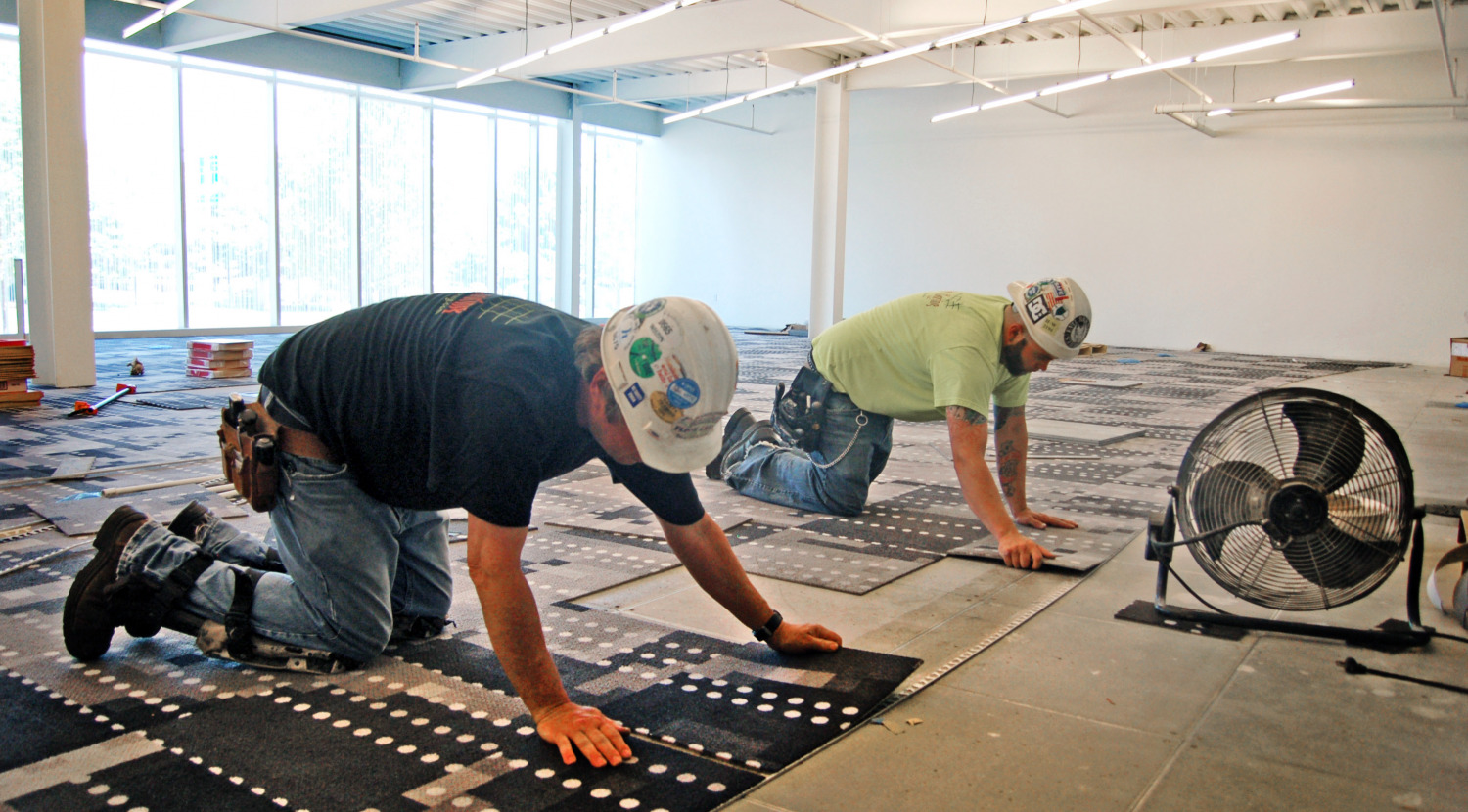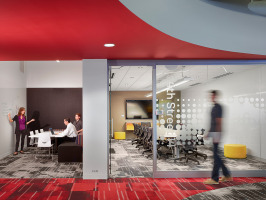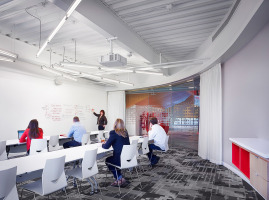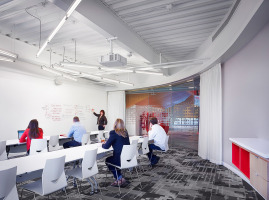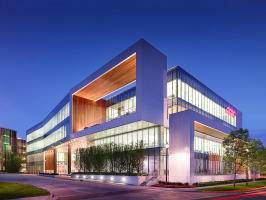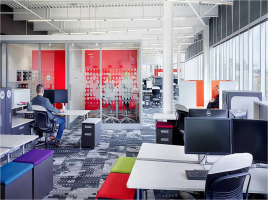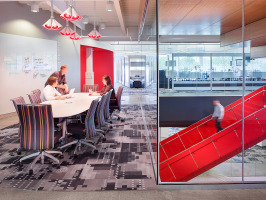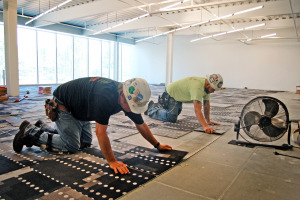AMC Theatre
The originator of the theatre multiplex and more recently a leader in guest-driven theatre innovations including plush recliners, dine-in theatres and even laser projectors, AMC Theatres today operates approximately 350 theatres with nearly 5,000 screens across the United States. Continuous, robust growth made the need for a new headquarters, which AMC calls its Theatre Support Center, inevitable. A move proved to be the perfect opportunity for the company to instill its vibrant, cinematic culture into its surroundings.
Needs
Formerly headquartered in a high-rise building in downtown Kansas City, Missouri, the theatre company felt cramped by the existing floor plans. Enclosed, oversized offices and floor-to-ceiling walls made open communication and culture development difficult. “With all the heavy wooden features and doors, we looked and felt like an old-school bank or insurance company,” said AMC’s manager of office services, Michele Mattoon. “If you had taken the name off the building, we could have been anyone.”
For the more than 500 employees, the hierarchy associated with offices and large furniture didn’t match the organization’s push toward cross-departmental teamwork and collaboration. Building on and celebrating AMC’s unique culture was a primary objective for the company’s new space.
Process
After making the announcement in October 2011 that it was moving to Leawood, Kansas, AMC kicked off the process by creating a steering committee. William Slusher, architect and design manager at AMC Theatres, worked with CEO Gerry Lopez and a team of AMC executives who offered critical insight into the company’s technical, operational and cultural needs.
The team traveled across the nation visiting the corporate offices of other world-class retailers, including Nordstrom’s, Starbucks, Disney and Google. Along the way, they picked up ideas and solutions that fit well with AMC’s culture. The new building, the team decided, needed to feel exciting and let visitors know exactly what the company did, from the moment they walked in.
The theatre chain engaged Scott Rice Office Works to help meet this goal. Departments were put together using Steelcase’s c:scape modular office workstations, both providing built-in storage and lending the departments an open-concept feel. Several mobile tables were added so co-workers could easily create a collaborative spot. Layouts and furniture were chosen as tools that enabled open communication for departments and their neighbors.
AMC chose to work with Scott Rice Office Works because, more than simply providing and delivering this equipment, Scott Rice offered service divisions for everything from interior construction and flooring to furniture and facilities management. “Our decision to go with Scott Rice had a lot to do with their long-term service and convenience that would continue long after we’d made purchases,” said Mattoon.
Solution
Since AMC’s new space doesn’t have traditional ceilings, privacy/work walls served the double function of creating smaller meeting spaces and showcasing current or ongoing projects. “It’s improved our speed to market because everybody knows what everyone else is doing,“ said Mattoon. “From there, work is noticed, which makes people happier and feel more accountable, which in turn makes them want to do an even better job. It’s a wonderful cycle.”
In the center of the building, a large atrium was built near the central stairs. There, meetings are held in front of a towering 330-inch screen made of 36 individual monitors. Large, open areas are surrounded by small touchdown spaces, often near stairs, copying stations, printing rooms and kitchen spaces, encouraging quick scrums.
Not only did AMC’s new Support Center eliminate nearly 80 closed-door offices, but the company added exciting amenities that helped co-workers create stronger bonds. A large cafeteria with an expansive kitchen and open-air balcony and fire pit encourages large group lunches. Many teams hold meetings on the patio in warmer months.
Taking advantage of the numerous bike trails in Leawood, AMC was able to promote healthy living as well. Employees can check out helmets and bikes and hit the trails. “People from all over the organization, who would never have seen each other in our former space, now get together and go for a ride,” said Mattoon.
Because of the unique nature of the space, several tours have been conducted since doors opened in July 2013. “By the end of every tour, there’s always someone who says they want to come work at AMC,” said Mattoon, “and I think that says a lot about who we are and how our building represents that.”








